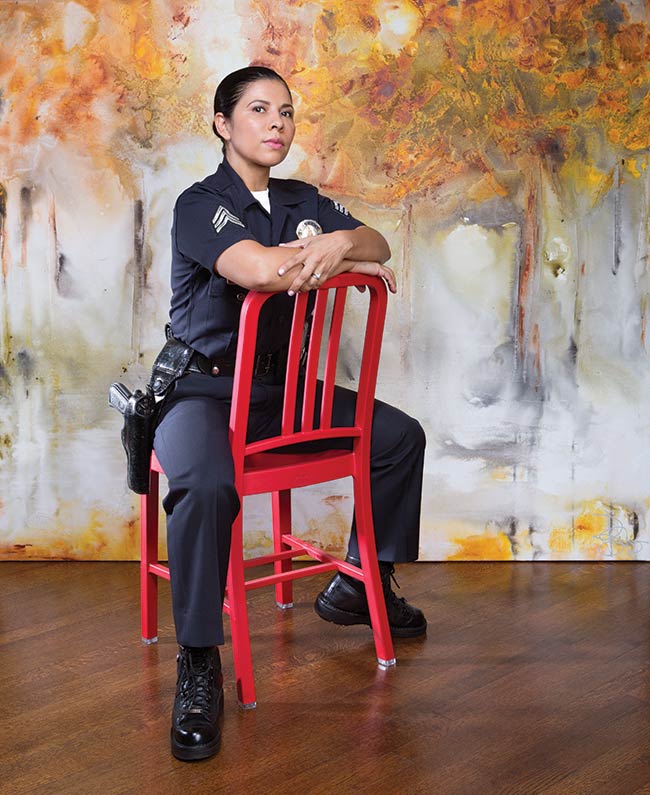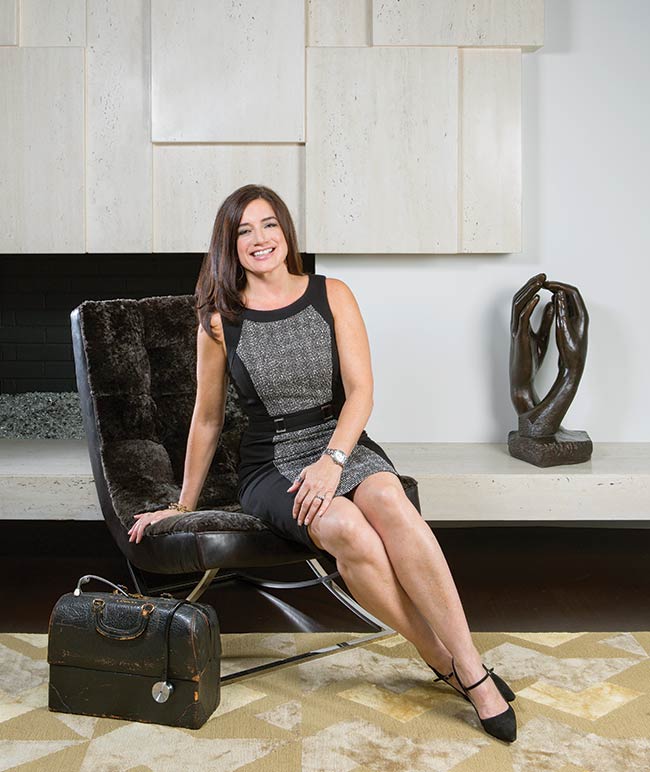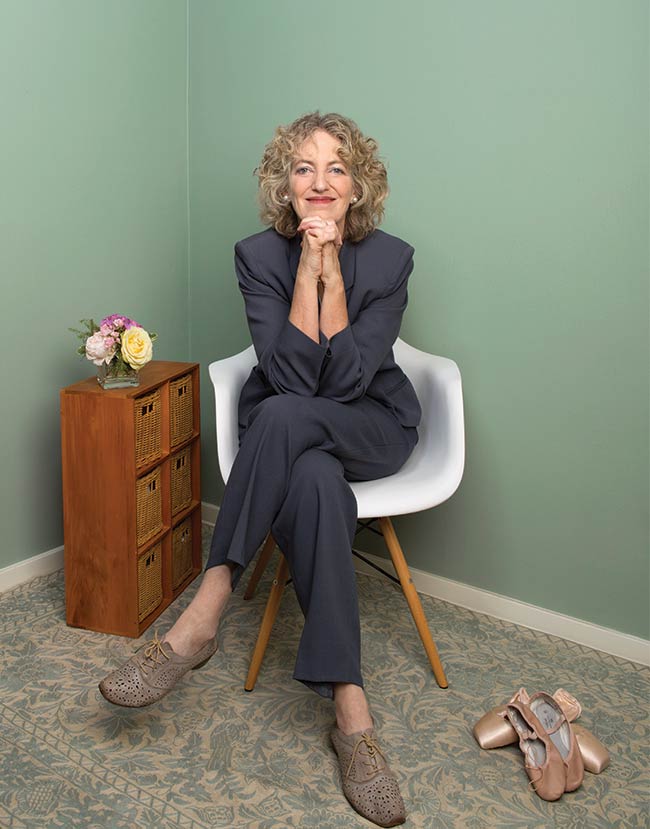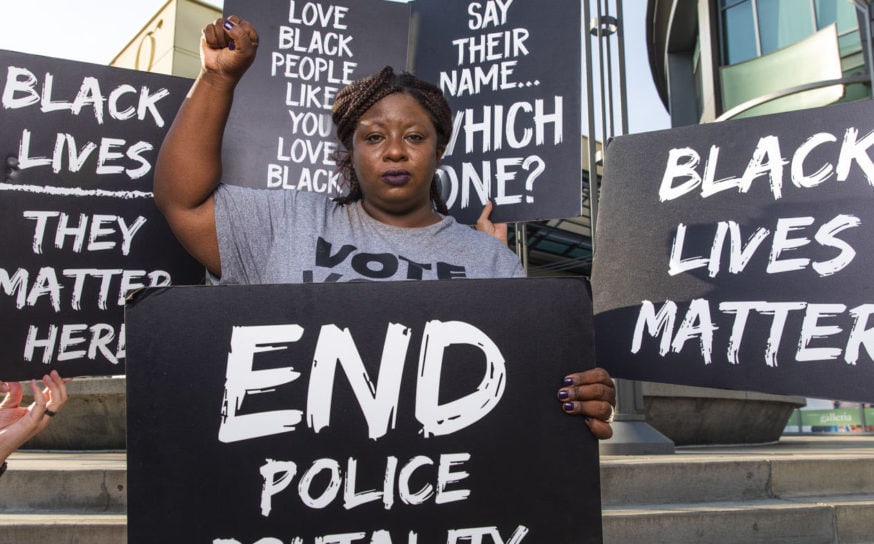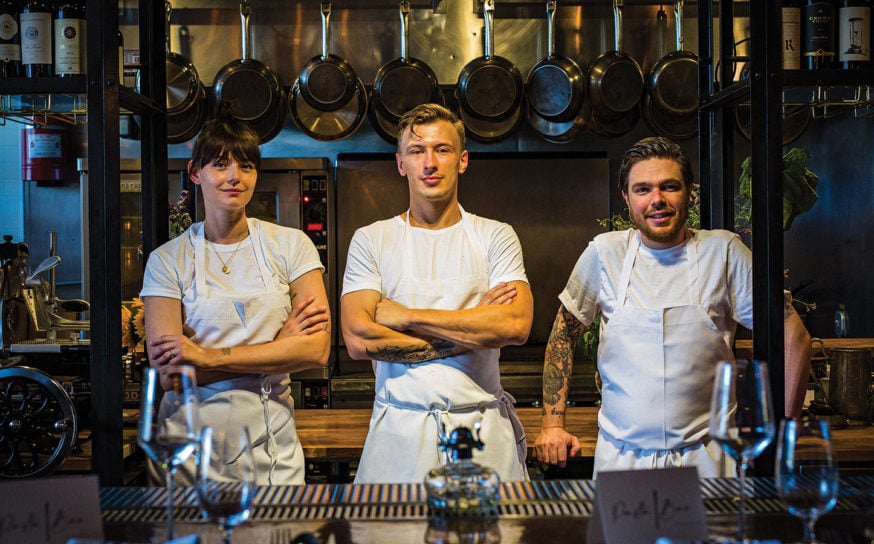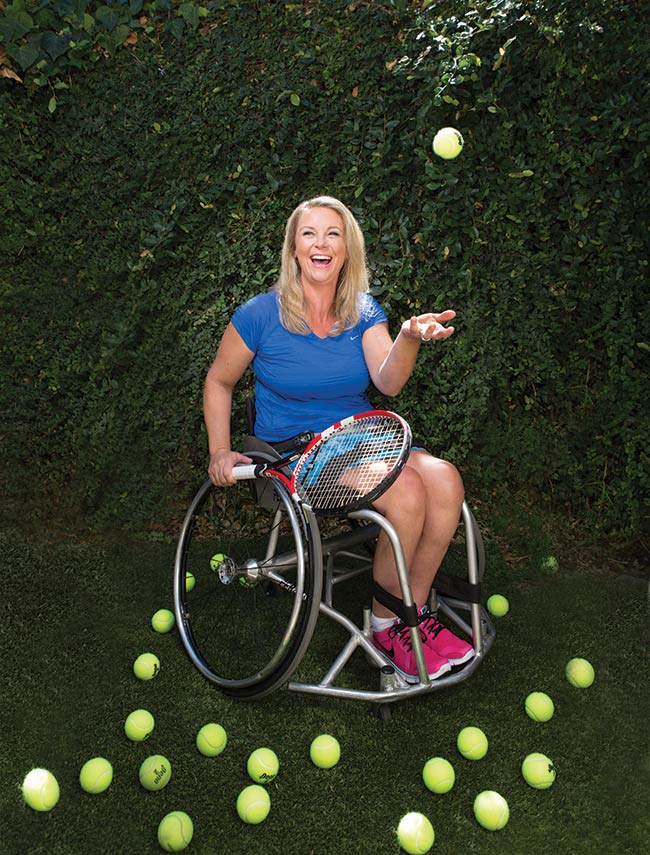
Women Who Amaze
From saving lives with cutting-edge science to showing us the power of the human spirit, Valley women are kicking aside conventions to live the way they want and transforming lives in the process.
-
CategoryPeople
Wendy Pasinski
Ambitious Athlete. Fearless Competitor. Role Model.
Wendy Pasinski has always loved athletics. She was an ambitious college basketball player in Oregon and also ran track and played volleyball—until she lost the use of her legs.
On a winter skiing trip at age 20, Wendy took a jump in icy conditions that turned out to be much steeper than she anticipated. She lost control of her skis and flew through the air “like a rag doll,” her friends would later tell her, crushing two of her verte-brae into her spinal cord. She was instantly paralyzed from the waist down.
“I was in the air long enough to know that I was going to come down and break something,” Wendy recalls. “I just figured it would be my arm or my leg. I had no idea I was going to break myself completely in half.”
After weeks of surgeries and physical therapy, Wendy learned she would likely never walk again. But whether she would play sports again turned out to be a different story.
Five years ago, Wendy, now 42, took up wheelchair basketball and tennis. Since then, her tennis career in particular has taken off. She is now ranked 6th in the U.S. in the women’s wheelchair A division, overseen by the United States Tennis Association.
She regularly takes part in tournaments from New York to Baton Rouge, and for the past few years she has competed in the U.S. Open Wheelchair Championships in St. Louis. Her ultimate goal is to move up from the women’s A division to the open division, secure sponsorship and compete on the pro circuit.
Taking up athletics again has lifted Wendy’s spirits and allowed her to rethink what she can do with her body, she explains. “It has reignited my competitive spirit,” says the animated former TV news reporter, who lives in Studio City with her husband and two young children. “Sports help me feel energized.”
But Wendy’s path to renewed athletic glory has been riddled with challenges. After her accident, she had to re-learn how to perform basic tasks in a wheelchair: crossing the street, getting into a bathtub, even opening a door.
Yet she has adapted with optimism and a buoyant sense of humor. “I probably have more problem-solving skills than other people,” she says with an infectious laugh.
“I’m sure my life would have been great without the spinal cord injury. This isn’t the body that I wanted; being in a wheelchair is really hard. But you can either sit and sulk about it or get on with things.”
By pushing herself as hard as she can, she hopes to model for her children how to overcome life’s hurdles. “I want to show my kids that you can have obstacles, and if you want something there’s a way to get it—and that’s by keeping an open mind and pushing forward,” says Wendy.
– Written by Rachel Heller Zaimont
Sgt. Maria Pedroza
Peacekeeper. Community Caretaker. Petite Powerhouse.
Sgt. Maria Pedroza still remembers the radio call like it happened yesterday: On a winter night in 2003, she and her partner answered a domestic violence complaint and showed up at a Van Nuys residence to find a woman had just been shot. Her partner rushed to clamp the victim’s artery, while Maria applied pressure to the wound. Maria and three other officers received a medal for saving the woman’s life.
“There was so much blood,” she recalls. “It was surreal. But we had to be like, ‘Okay, no big deal—let’s do it.’”
That coolheaded focus has served Maria well during her 15-year career with the Los Angeles Police Department (LAPD). Since joining the force in 1999, Maria, 45, has worked her way up to become one of just a handful of female sergeants in the LAPD’s Van Nuys Division.
After working patrol for about a decade, she now has a community relations role, overseeing the division’s seven senior lead officers. From a utilitarian, second-story office, she helps monitor ongoing community issues such as vacant homes, transients and burglaries. Her wide grin and neat, elegant bun are a common sight at neighborhood meetings.
“It’s fun to see people in a different way. I’m not there to arrest them or tell them that they’ve done something wrong. It’s more, ‘Hey, how are things? Let’s work together,’” says the Granada Hills resident. “Whenever I go to SOHA meetings, I feel like I’m seeing family—it’s great.”
Maria knew she wanted to be a police officer since she was young. “I didn’t grow up in the best of neighborhoods,” she says. “I saw how the police took care of the community. They would come in, make arrests and take the bad person away. I wanted to do that.”
She worked at UCLA for a time, reviewing contracts and grants. But the notion of joining the LAPD always simmered. “I said to my husband, ‘Remember when I wanted to be a police officer? I have to give it a try,’” she recalls. “Fifteen years later, I’m still here—and I love it.”
The petite brunette is tougher than she looks at first glance. She remembers storming a house, hunting for a homicide suspect who turned out to be hiding in a closet. While evacuating residents from a Porter Ranch fire several years ago, she was forced to flee on foot as the flames raged out of control.
And battling old-fashioned gender stereotypes in the department is also a challenge, she says. “I remember showing up to radio calls with a female partner and guys saying, ‘Oh my God, they sent two girls?’ I’m like, ‘Yes, we can handle this,’” she recalls with a chuckle.
Now that she spends more time behind a desk, Maria sometimes pines for the “adrenaline rush” of patrolling. “I miss chasing the bad guy. I miss responding to radio calls. I miss saying, ‘Yes, I’m here—let’s kick this door down,’” she says. “Once in a while I tell the officers, ‘Hey, let’s go out, I want to do something!” I like to jump in the car with them and say, ‘Let’s go.’”
– Written by Rachel Heller Zaimont
Dr. Ora Karp Gordon
Scientific Trailblazer. Gene Expert. Life Saver.
From her “totally girl-power” upbringing in New York to her self-designed undergraduate major in arts and genetics, the signs were long present that Dr. Ora Karp Gordon was going to be some kind of pioneer. She credits her mother, a lifelong activist who marched on Washington, D.C., to support women’s reproductive rights, with her feminist bent. “I have always been a champion of women’s health,” Dr. Gordon says.
This fall, Dr, Gordon, 48, is settling into a new role as director of cancer genetics and integrative medicine at the Roy and Patricia Disney Family Cancer Center of Providence Saint Joseph Medical Center in Burbank. There, she heads a hereditary disease prevention program unlike any other.
“My goal here is to build the first-of-its-kind integrated genetics, genomics and prevention program serving the whole Valley,” she says at her spacious, book-lined office.
Dr. Gordon sees patients who either have a family history of disease or have had a scare themselves, and she coordinates a custom management plan that minimizes their risk. She might suggest MRIs, medications, nutritional changes, or even yoga and meditation.
“You can’t change your genes, but you can change your lifestyle, your mind and body outlook, your stress level,” she says. “The idea is to try to find the perfect balance for each person in order to keep them healthy and well.”
Dr. Gordon started out working with female patients as a genetic counselor after graduate school. She remembers helping women make decisions about prenatal care—whether to test for birth defects, for instance. But she yearned to make a bigger impact.
“There was definitely an intellectual glass ceiling, and I felt like I couldn’t effect change,” she recalls. “That’s what drove me to go back to school.”
While she was in medical school at UC Irvine, researchers identified the BRCA genes that increase a woman’s risk of breast cancer. “I was like, ‘This is it. I’m going to do women’s health and prevention,’” she says.
Dr. Gordon, who is also an associate professor at the David Geffen School of Medicine at UCLA, is now completing a fellowship to become board-certified in integrative medicine. She often finds herself doing homework alongside her two teenagers at the Tarzana home she shares with her family, two dogs and three chickens.
“I want to help empower people to take command of their own health destiny,” she explains—and maybe, down the road, open a health-conscious restaurant. Anything is possible; that’s what her mother encouraged her to believe. Growing up, she says, “there was nothing that we couldn’t achieve.”
– Written by Rachel Heller Zaimont
Liza Bercovici
Loving Mother. Devoted Philanthropist. Determined Educator.
You might think it’s impossible to retrieve anything beautiful from the heartbreak and tragedy of losing a child. But then, you haven’t met Liza Bercovici.
While on a vacation in Wyoming, Liza was riding bikes with her husband, two sons and 13-year-old daughter, Gabriella, a student at Harvard-Westlake. Gabriella was struck and killed by a distracted motorist.
“Gabri loved dance, and from a very young age it was clear she had a natural talent,” shares Liza, a tall, elegant woman with piercing blue eyes. “At home she’d turn on the music and spend hours creating her own choreography.”
She says one of her most treasured memories is the look of happiness on Gabri’s face as she danced with the Harvard-Westlake dance company in a performance just weeks before she died. After the tragedy, a friend sent Liza an article about a nun who created a nonprofit organization that taught dance to inner-city children in Santa Ana.
Intrigued, the Studio City resident visited the dance studio. Impressed by what she saw, Liza wanted to figure out a way to replicate it in Los Angeles, although she knew that finding a building might be a struggle.
A friend of Liza’s was converting the Sheraton Townhouse west of downtown into an affordable housing project. The banquet hall sat empty, and Liza’s friend donated the space. Classes began in 2005, and Everybody Dance, founded in memory of Liza’s daughter, was born.
With the mandate being that that high-quality dance instruction should be available to all children, regardless of financial status, Everybody Dance took off. In little more than a year, day classes were offered to students at a charter school that couldn’t afford an art education program, and additional dance class sites were opened.
But Liza didn’t stop there. In 2005 she spearheaded the opening of Gabriella Charter School, a unique facility for disadvantaged children. All 436 students at the school dance for one hour every day, with 89% of the student body admitted free of charge or on a reduced rate.
“Gabri loved to dance, but she wanted to be a classroom teacher when she grew up,” Liza explains. “In a way, starting a charter school—like our dance program—was another way of commemorating and honoring my daughter’s life.”
Gabriella Charter School is earning accolodes. It was ranked second best among all elementary and middle charter schools in the state by the University of Southern California’s prestigious 2013 School Performance Dashboard.
Today Everybody Dance serves 2,400 children. “I wish we could give them more, such as science labs for our middle school kids, more computers, internet in their homes,” Liza asserts. “But we will get there one day.”
– Written by Judith A. Stock





